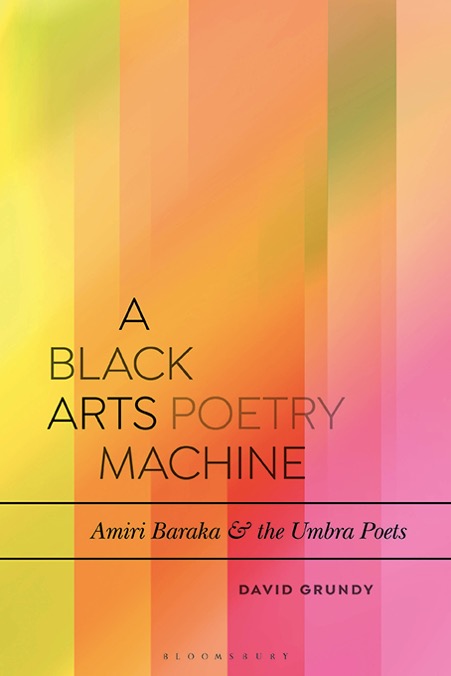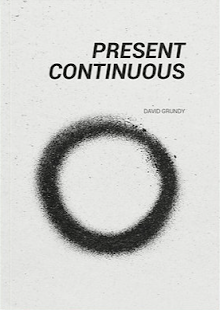
Label: Erstwhile
Release Date: November 2010
Tracklist: 2 Seconds/ B Minor / Wave
Musicians: Michael Pisaro: composition, guitar, field recordings; Taku Sugimoto: composition, guitar, misc.
I’m torn about this one, for reasons I’ll go into later: but to start off with, I’ll admit that, certainly, it’s interesting and valid and an important contribution to the ongoing debate about and evolution of the music. It’s simpler (as in, less full of musical events) than the two recent Toshimaru Nakamura duos with acoustic guitarists (‘Crepuscular Rays’ with Havard Volden and ‘Semi-Impressionism’ with Tetuzi Akiyama), and more obviously transparent; indeed, it lays its materials out so clearly that it could almost be accused of being an entirely conceptual work – Pisaro’s and Sugimoto’s contributions were recorded separately, after all. That said, the separate recording technique has become common enough recently to justify it being called a legitimate technical resource, rather than a case of one-off experimentation: the MIMEO album ‘sight’ from a few years back is perhaps the most famous example (though it’s actually a slightly different case, as the larger ensemble gives it more of an aleatoric element – the probability of there being concurrences and agreements between the separate recordings becomes lower once the number of participants starts to spread). With duo recordings, however– ones as sparse as this one, anyway – it’s much easier to get some sort of concurrence, if not active ‘dialogue’ in the EFI sense: indeed, if one was played Sachiko M/ Ami Yoshida’s collaboration as Cosmos (recorded live, with both musicians in the same room) and the Nakamura/ Yoshida collaboration ‘Soba to Bara’ (in which both musicians’ contributions were recorded separately), one would be hard pressed to say which one featured the performers in the same space. The new approach to duo playing fostered by the influential ‘lowercase’ scenes in Japan, Berlin, London is one in which sonic proximity means sharing the same space, rather than direct imitation or facile ‘conversational’ interplay; each player pursues their own particular direction, following the consequences of one idea or texture or type of sound in a way that overlaps with, rather than directly parallels, the activity of their partner. (A fine recent example would be Angharad Davies and Axel Dorner’s ‘AD’). Given this, the separate recording technique fits perfectly; and, given also the way that recent developments of post-Cageian theory and practice have blurred the lines between composition and improvisation (as documented on the new ‘Silence and After’ series on Another Timbre), one can argue that the music is as much conceptual as it is musical, that theory and practice, sound and pre-planned framework/manner of execution are too closely tied to be usefully or easily disentangled.
This does not mean, though, that one cannot judge it by musical standards: indeed, they are the primary means of measurement, the yardstick by which to make one’s mind up. The criticism which has developed (mainly on blogs and online fora ) alongside the new methods (well, OK, by now they’re not that new, as Mattin would no doubt argue) does, in fact, stress personal subjective judgement just as much as any theoretical or systematic analytical system: one is more likely to get a story about the circumstances in which the record was listened to, minute details of the sounds of passing cars, neighbours’ noises, etc, than one is to get a treatise of aesthetic jargon. It’s an interesting intersection indeed, where pursuing theoretical goals with great rigour, embracing deliberate limitation and an almost monastic intensity of focus, leads to the creation of a music in which such simple and ‘old-fashioned’ criteria as ‘I like this sound’ and ‘that is a beautiful chord’ become surprisingly important. That’s not to say that there is no critical rigour involved, and most committed listeners to and writers about this music would be able to have a long and considered debate about whether something works artistically or not – it’s not just a simple ‘I’m partial to this’. Still, all this builds up to the statement with which I began the review: I find myself in two minds about the merits of the disc because both my personal sense of enjoyment (probably not the right word) and my critical, evaluative sense raise problems for me when listening to it.
Firstly, let’s consider the conceptual (compositional) framework which has been used to construct the three pieces. All three last twenty minutes exactly; all bring together two separate compositions/performers based on a particular idea. ‘2 Seconds’ is a unit of pulse; ‘B Minor’ a key; ‘Wave’ was left more open, with each musician free to make their own interpretation of that word. The opening track finds Pisaro using layers of sine waves, looped to create beats which fit in with rhythmically with Sugimoto’s own short, electronic beeps (a guitar tuner?) and striking of what sounds like two wooden objects (claves?). The sine tones build up to create rich chords that are sometimes Sachiko-M-stark (though not quite as tinnitus-inducingly high-pitched – there’s a significant low-end rumble which occasionally caused my headphones to vibrate), sometimes gorgeously, spacily rich (this ‘beautiful’ aspect to sine tones is one that’s not been explored that much – the only example that springs to mind is the work of the clarinet/electronics duo Los Glissandinos). Some of the tones are held to create the chord, but the more abrupt, dial-tone like elements ensure a kind of clipped-feel round the edges; the piece is at once comforting in its rhythmical regularity, and somewhat forbiddingly robotic (like a kind of soft industrial music). Occasionally, we hear sounds from (I presume) Sugimoto’s recording which allow ‘real-world’, non-electronic sounds into proceedings: occasionally we hear the squeak of someone shifting their weight on a leather chair, and at one point what sounds like an electric drill is briefly switched on. Given these fragmented glimpses, one supposes that Sugimoto’s contribution had a visual, theatrical/ritualistic quality to it which is lost on the recording, suggesting other dimensions to the piece that belie its apparently fixed and rigid quality, opening out beyond the recording to different spaces, times, contexts. Ultimately, though I do admire the restraint of the concept, I can’t quite fully enjoy the track as a whole: at times I admire the bloody-mindedness of the clockwork electronic beep and the sections of layered sine-tones, at others I feel unable to fully pull myself into the soundworld, stepping out of that immersion into which I had briefly been drawn.
My fault? Perhaps. ‘B Minor’ is next, and evinces the same sort of rigour in terms of the gestures each musician allows himself; this time, though, what is played is deliberately pretty, imparting things with a Loren Connors-style minimalism. Of course, we remember this from the classic Sugimoto of ‘Opposite’, and we think too of his recent recordings of simple, haiku-like melodies, rendered with a sparse and often beguiling, hesitant delicacy in tandem with vocalist Moe Kamura. You can have too much of a good thing, though, and, while this might have been absolutely gorgeous if restricted to three or five minutes (as were the pieces on ‘Opposite’, and as are the pieces on ‘Saritote II’), it does pall somewhat over the full twenty. Both men are on electric guitars: Sugimoto plays the harmony (in B Minor, of course) – slowly-paced, equally-placed chord sequences – Pisaro, the melody– sustained handfuls of notes that mesh with and accentuate the chords, rather than back-grounding them. It is lovely, yes, but…And then I think: to what absurd, acerbic levels of ‘beauty’ have I become accustomed which would lead me to think that this music, perhaps palpably ugly or just plain boring to some people who have no idea of onkyo or taomud or wandelweiser, is overly pretty? But we enter a difficult area when we consider beauty as the generation of prettiness, delicacy, sweet tinkling textures: and, while Marion Brown’s contribution to Harold Budd’s ‘Bismali 'Rrahman 'Rrahim’ ensures that that track remains one of my all-time favourites, the rest of that Budd record, sans Brown, goes too far into gloop and sickliness. Or once again, I know people whose musical views I totally respect, and whom one would hardly call un-critical New Agers, and yet I just cannot share their enthusiasm for Laraaji’s ‘Day of Radiance,’ the third in Brian Eno’s ambient series. It’s the same here – I’m not sure what the optimum number of minutes for the track would have been, but somewhere, things step over an invisible (l)edge and that kind of simple beauty is not quite enough.
Onto the final track, anyway, in which Sugimoto interprets ‘waves’ to mean ‘(sound)wave’ – a sustained (e-bowed?) drone – while Pisaro chooses a field recording of ocean waves breaking (or it may be an electronically-generated sound), which enters and drops out of the texture at regular intervals. For me, this is somewhat spoiled by Pisaro’s contribution, which doesn’t seem as integrated as were the elements that made up the other two pieces. It sits on top of the overall musical flow, rather than being fully integrated – it feels like an add-on, rather than an interesting juxtaposition. And it also works against the rigour of the drone, rendering it almost New-Agey, like an avant-garde version of one of those ‘Sounds of the Sea’ easy-listening albums you find in British garden centres. Perhaps this is the inevitable consequence of the aleatoric way in which the music was put together, but I’m not sure that’s necessarily true: as the other tracks, and other separately recorded improv collaborations attest, it’s perfectly possible to create something cohesive and symbiotic using this method. Maybe it’s a kind of reminder, a jolt that prevents us getting too comfortable, that lets us know the element of risk and failure we had forgotten about in our easy immersion into beauty and prettiness. Here one thinks of Boulez distinguishing between ‘right’ and ‘wrong’ chance operations (in the 1957 essay ‘Alea’ ), and wonders ‘have I become as tetchy as that’? On the other hand, I just don’t feel that the piece works, whatever the methods behind its construction.
Overall, then, there are elements about each piece I like, both conceptually and musically. Of the three, I think ‘2 Seconds’ probably works best over the entire twenty minutes; ‘B Minor’ is more immediately pretty/ beautiful, but somewhat outstays its welcome; and ‘Waves’ is (perhaps deliberately) less cohesive (or at least, more slight), which, for me, makes it less successful musically. Summarising in this way, I’m aware of how subjective, in an almost petty manner, these judgements sound; and I’m grateful to this recording for making me want to examine my own critical approach as much as I examine the album itself. Whether it ‘works’ or not, it is, as I argued at the beginning, an important document, a springboard for debate, and a musical experience with some genuinely lovely moments; very much worth investigation if you haven’t heard it already.








